Art of Shringar – The Ancient Beauty Wisdom
Solah Shringar, are you too tempted by this ancient wisdom? Looking to learn this beautiful art? We are here to help. Let’s first understand the basics. These traditional Indian adornments and beauty rituals are a part of our Indian culture for ages. They include sixteen essentials to bless a woman with divine beauty. From makeup to ornaments, solah shringar includes everything that a woman truly needs to enhance her appearance and look drop-dead gorgeous. Donning a saree? Add a hint of solah sringar and bag compliments.
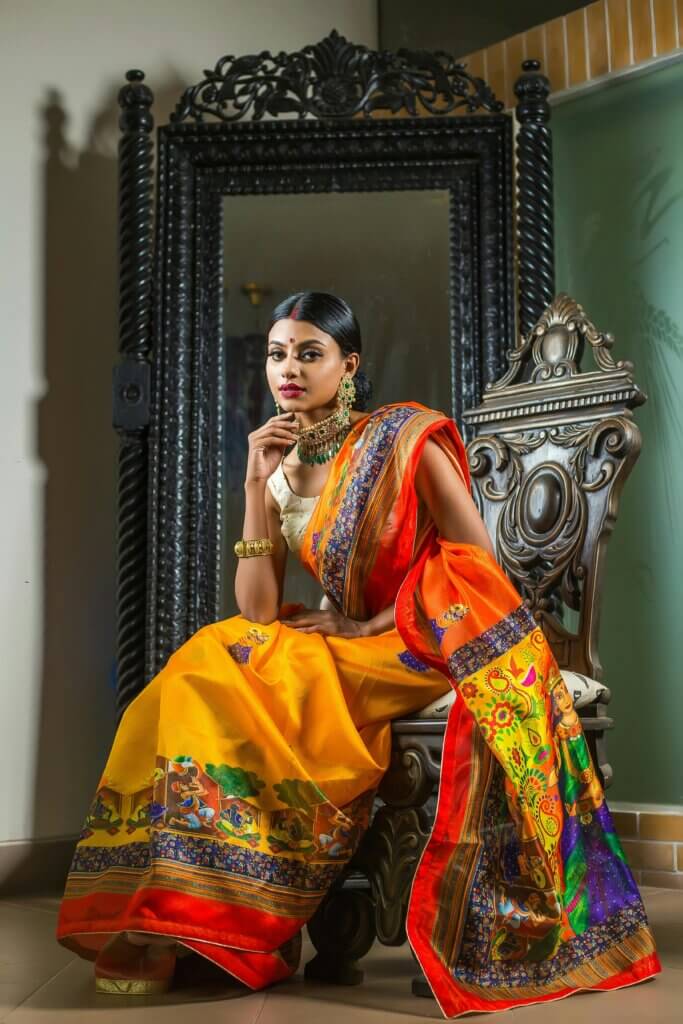
Well, every step involved in the solah shringar was designed very thoughtfully. It works magically and scientifically on a woman’s body and basically corresponds to the sixteen phases of the moon. Since, a woman’s menstrual cycle gets affected by the moon and its phases which in turn has an effect on her body and her mind, solah shringar was designed so as to nullify those ill-effects.
Every adornment is significant. Let’s dig into the details and also learn how to incorporate them into our everyday beauty rituals so as to embrace the ancient beauty wisdom effortlessly. A Cleopatra fan? Well, you’ll be surprised to know that ancient Indian wisdom predates her by thousands of years and comes straight from the Vedas. Let’s dive in—it’s going to be a long read, but we promise, it’s definitely worth it!
Indian Shringar Elements- The Beauty Must-haves
1. Joda: The Sacred Attire
The attire worn by a woman is her first shringar. It basically comprises of the odhani or a saree that a woman wears. The colour of the joda is important, and red is the preferable choice as it symbolises fertility and marital bliss. Now, you know why red is the universal bridal colour in India.

2. Sindoor: The Signature Marital Shringar
For a married woman, the sindoor or vermillion is the most significant shringar. Married women apply it along the parting of their hair. It is a sign of their marital status. If you are married and wearing a saree, wear sindoor to complete your look and add that beautiful touch of tradition and spirituality. Also, sindoor instantly lights up your face and gives that much needed glow. Gone are the days when sindoor was a fashion faux pas. It’s in vogue. So, don it proudly and look your best.

3. Maangtikka in Indian Shringar
This beautiful head jewellery draws attention to the face. Since it sits heavy on the head and is made in metals like gold and silver, it controls body heat and helps you keep calm. Falling straight on the anjana chakra a maangtikka signifies the union of masculine and feminine energy. If you are wearing a saree, choose a piece that complements your saree’s style—traditional gold maangtikka for heavy silk sarees or a modern one with colourful stones for a lighter saree. A maangtikka cannot be worn regularly as it’s too heavy for everyday wear but for not so grand events, go for an understated maangtikka or maathapatti. Choose your fit wisely.
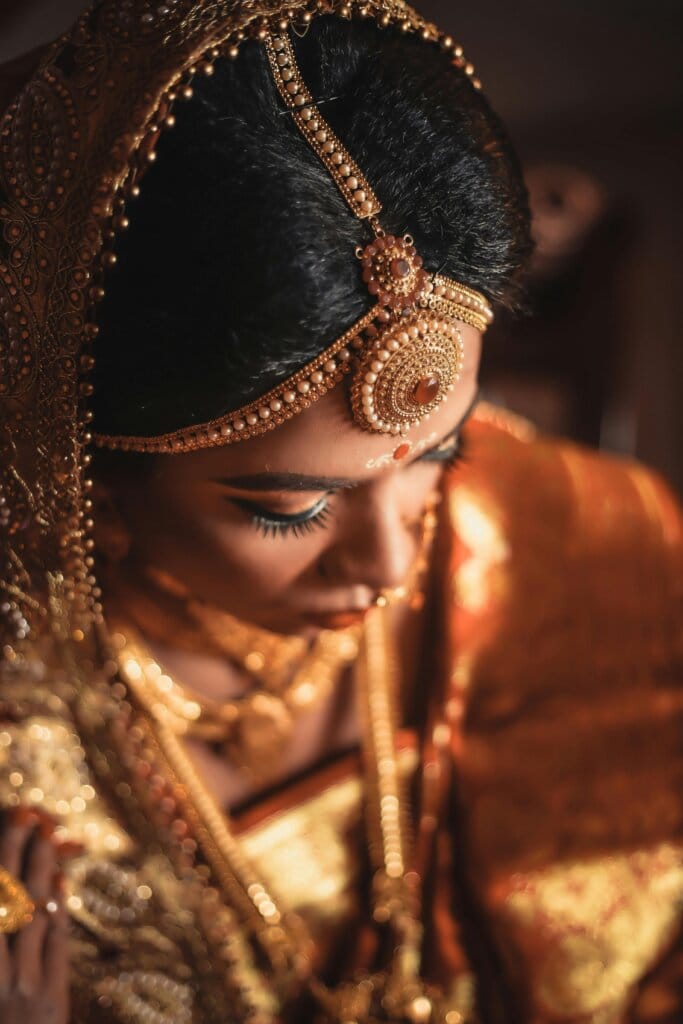
4. Bindi: The Staple
The iconic shringar, bindi is applied on the centre of the forehead. It is typically in colours like bold red or black and symbolises beauty, wisdom, and culture. Sitting on a woman’s ajana chakra, the bindi brings that serene calmness to her personality. It also enhances your facial features and leaves you looking no less than a goddess. Match your bindi with the saree’s colour and you’re good to go.

5. Makeup: The Quintessential Indian Shringar
Talking of Shringar, how could the ancient Indians forget the quintessential. Kajal for dramatic eyes, naturally coloured lips with betel leaves, a hint of rosiness added to the cheeks, it was all a part of solah shringar. The good thing was everything used was natural and had medicinal value unlike today where everything is chemical based.
Makeup enhances your natural features. Use a base to get a flawless skin. Define your eyes with kajal as it brings a touch of drama. For lips, choose shades that complement your saree’s colour, such as red for a traditional look or pink for a contemporary twist. To add that subtle glow, use a highlighter. For heavier sarees your make should be soft and for lighter ones you can be a little playful with your makeup. The right makeup and you’ll stand out.

6. Shringar with Perfume: A Hint of Sensation
A soft, lingering fragrance is an important part of shringar. Choose a perfume that suits your saree’s vibe—floral scents for a traditional look and musky notes for a sophisticated feel. A well-chosen fragrance will complement your saree and add to the sensory experience of your appearance.
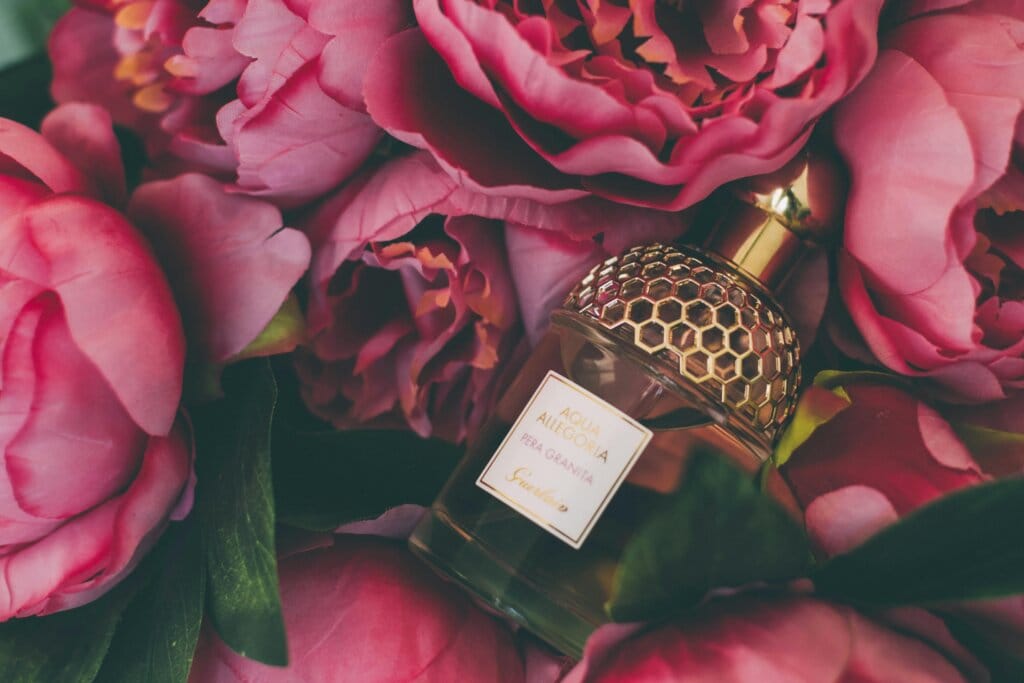
7. Nath: A Dash of Royalty
The nath or nose ring is a traditional piece of jewellery, often worn with sarees during weddings or festive occasions. It adds an elegant touch to your appearance. This delicate metal ring adorned with gemstones, pearls, or diamonds, is an eye-catching addition to your look.
Pair a nath with a saree to get a divine appeal. As for the health benefits, the nose ring ihelps relieve menstrual pain. Women usually wear it on the left part of the nose as it is believed to ease childbirth. From ancient wisdom to a fashion statement, nath comes in various shapes and sizes. Choose one according to your saree and the occasion you are dressing up for. Style it and rock it!

8. Karna Phool: The Dangling Tradition
Traditional earrings karna phool also known as jhumkas are beautiful and stylish. They come in various sizes so you can pick your fit based on the grandeur of your saree. Chunky or small, jhumkas are eye-catching. They add volume and bring attention to your face. These pieces look best when styled with a saree during traditional ceremonies. Avoid them for formal and casual events. Rather go for geometrical earrings that complement your formal and casual sarees. The idea is to dress appropriately while reaping the benefits of the ancient wisdom called Indian shringar.

9. Mangalsutra: Signifying The Bond of Marriage
The sacred necklace mangalsutra is a staple for married women in India. It signifies the bond between husband and wife. People believed that the black beads of mangalsutra protect the relationship of husband and wife by warding off evil eye and negative energy. A heavy mangalsutra looks royal with a heavy silk saree whereas a simple minimalistic piece works well with lighter fabrics. The key is to keep traditions alive while looking your best. Flaunt your traditional side in great style.
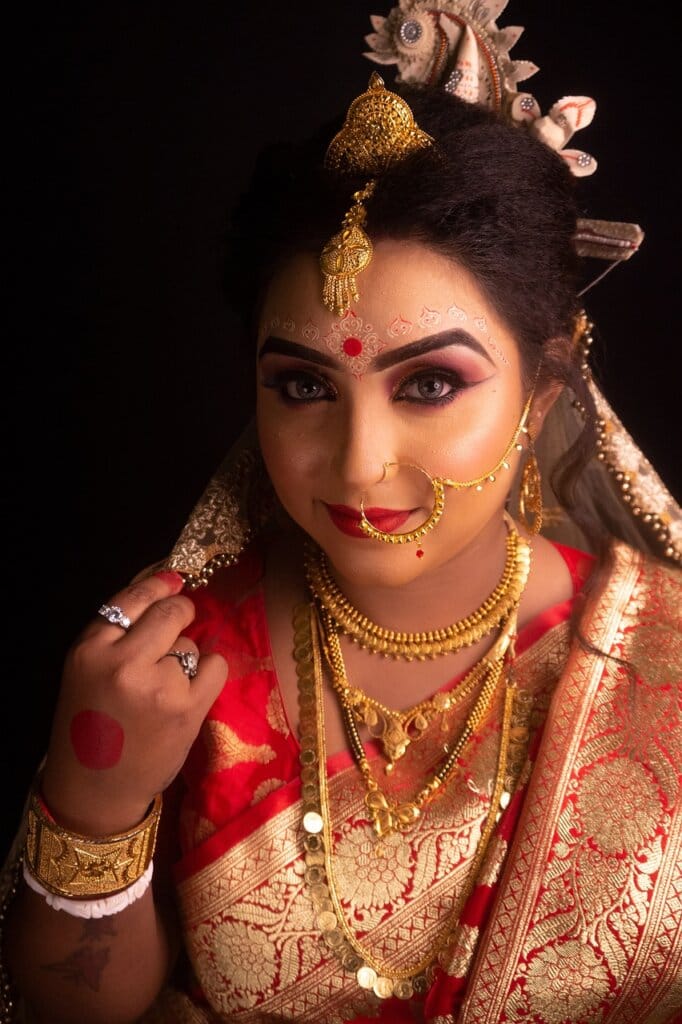
10. Mehndi: Beautiful Henna Tattoo
A fan of tattoos but don’t want to go the chemical way? Then this Indian shringar is your thing. Though it’s temporary but it imparts unparalleled beauty. Also, the subtle scent of henna is an add-on to the benefits it offers. Adorn your hands and feet with henna and you’re ready to steal the show. However, full coverage designs aren’t an everyday thing. Save them for grand occasions and go for lighter, more subtle arabic designs to enhance your looks.

11. Gajra: Fresh Blooms to Adorn Your Hair
A fresh hint of blooms to your braids and buns is an essential part of the Indian solah shringar. Woven beautifully into your hair they also offer natural remedies for headaches and migraine. Clad in a saree and adorning your hair with fresh jasmines? You’ll be an absolute stunner. We bet! This look is perfect for weddings and auspicious occasions.

12. Shringar with Baajubandh: The Elegant Arm cuff
Commonly tied around the upper arm, the baajubandh or armlet is a traditional piece of jewellery. It is said to improve blood circulation and also heals the heart as it presses the corresponding pressure points. A current rage these days, baajubandh is a fashion statement as well. You can choose a simple gold band or a heavier design with gemstones to give that much needed style twist to your saree without accessorising heavily.

13. Kamarbandh: The Waist Adornment
A decorative waist chain that sits on the waist, kamarbandh adds grace and structure to your silhouette by cinching the waist. It highlights the shape of your figure. Delicate chain with pendants or a heavy designs with beads and gemstones, the kamarbandh balances the saree’s flowing fabric. It helps control belly fat and improves blood circulation. Usually made of silver it is also believed that these chains help balance body energy and regulate menstrual cycle. Let these be a part of your saree adornment and enjoy the benefits.

14. Choodiyan: A Melodious Jingle
Who doesn’t love the jingling bangles? The soft melody is a treat to the ear. Well, that was the reason why bangles are an essential in the solah shringar list. Heavy bangles help improve blood flow and ease menstrual pain. Also, their jingle keeps negative energy at bay. In India it also served as a lullaby for babies, as Indian women used to pat their babies while putting them to sleep. Stacked on your wrists and paired with a beautiful saree, you will stun like a Goddess. Choose glass, gold or silver bangles, there are a plethora of options to choose from.
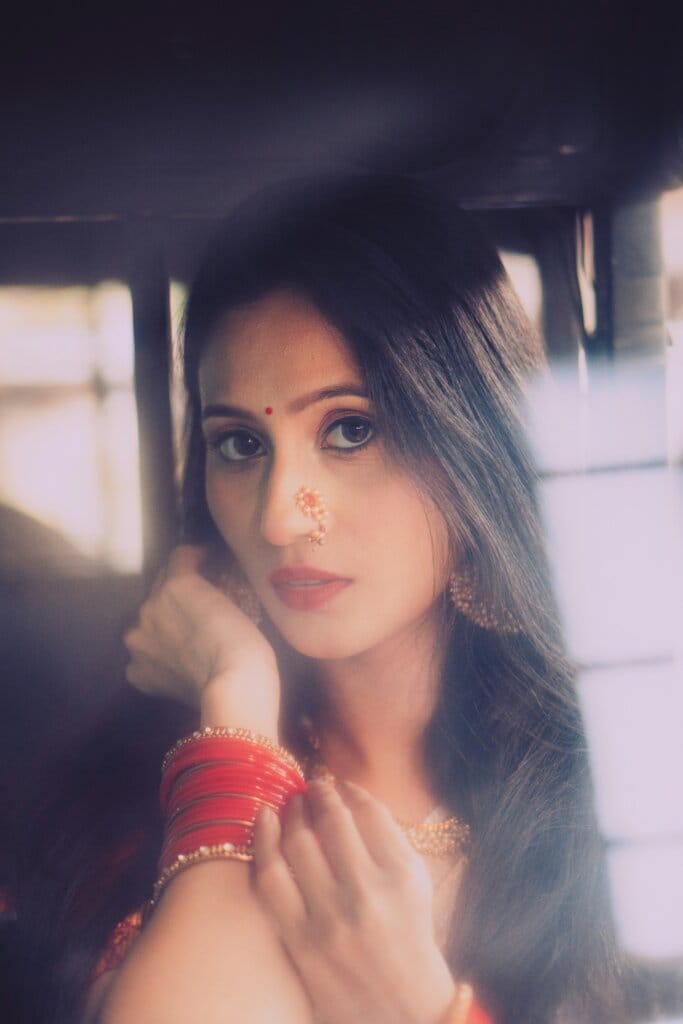
15. Shringar with Haath Phool: The Lost Tradition
Haath gehna basically includes beautiful jewellery pieces to adorn your hands, including rings and haath phool (hand flowers). Rings are used to adorn your fingers whereas haath phool beautifully decorates the back of your hands. Heavy haath phools help improve your blood circulation They provide the same health benefits as bangles. Heavy hand adornments are a lost thing now. To incorporate the health benefits of this Indian shringar, you can go for lighter rings and hand adornments. Going for a wedding, try minimalistic haath phools, they are in vogue these days. A bride or a newly wed? You have the liberty to go all heavy with haath gehna. Try them, you’ll love the look and feel.

16. Payal: Adorning the Ankles
Payal or anklets are traditional Indian foot adornments. Earlier, women used to wear extremely heavy payals to weigh down their feet. Usually made from silver, payals have their own health benefits plus the melodious jingle of anklets is said to ward off negative energy. Payal is said to improve bone health and blood circulation. It also reduces inflammation. When worn with sarees, the soft jingle of anklets gracefully complements your attire and adds movement and allure. Choose ornate payals for grand events and simple understated pieces for the not so grand ones. Beauty with benefits-isn’t a payal is?
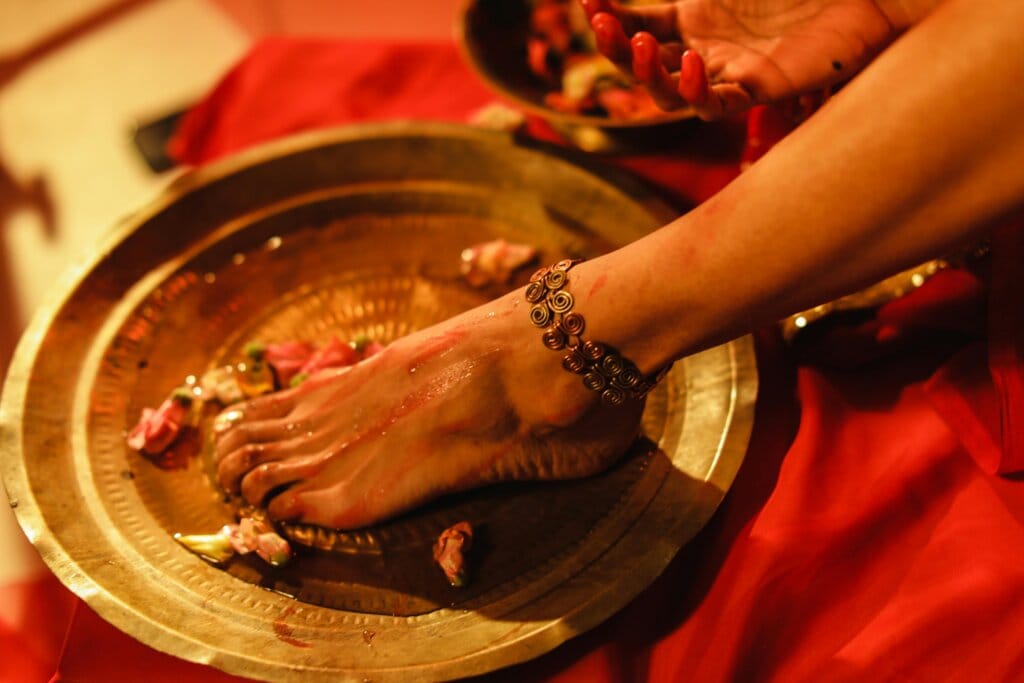
17. Bichiya: The Traditional Toe Ring
The ultimate symbol of marital bliss and fertility, bichiya adorns women’s feet. Since, it sits tightly on the toes, it is said to press the nerves corresponding to the fertility of a woman. This beautiful foot adornment ensures you look stunning from head to toe. However, in some cultures in India unmarried women are not allowed to put on a bichiya.

18. Aalta and Shringar: Adorning Your Feet with Colour
A beautiful maroonish red dye, Aalta or Mahavar is used to adorn a woman’s feet. Pious and sacred aalta is vital in weddings and festive celebrations. In India wearing aalta is a must for brides as well as married women during auspicious ceremonies. It signifies devotion, love, commitment and fertility. The science behind aalta is that it also brings health benefits as in the ancient times aalta was made using vermilion, betel leaves, kumkum and a hint of lime and turmeric which gave it its signature red colour. Since, all the ingredients were ayurvedic, they healed a woman’s body. In some cultures, men too applied mahavar. It also kept evil eye at bay.
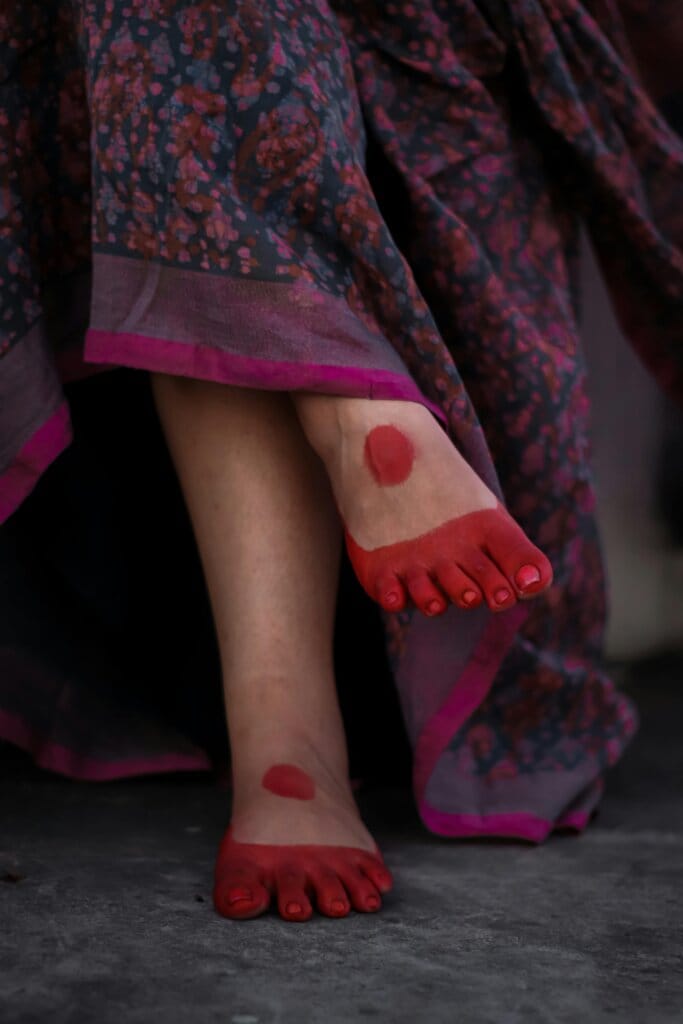
Saree and Shringar – A Match Made in Heaven
Saree and shringar go hand-in-hand. Try flaunting a saree without the essential shringar and one with all the shringar perfectly adorned. You’ll instantly feel the difference. Shringar preps you up making you look and feel divine like a Goddess. Smelling heavenly of pleasant blooms, adorned with glittering accessories- obviously, grand for grand events and minimal for the casual ones, your look instantly pops up with shringar. So, what are you waiting for? Go try whichever shringar best suits your personality and lifestyle and be a fashion icon. Do let us know. We are waiting to hear your style stories.

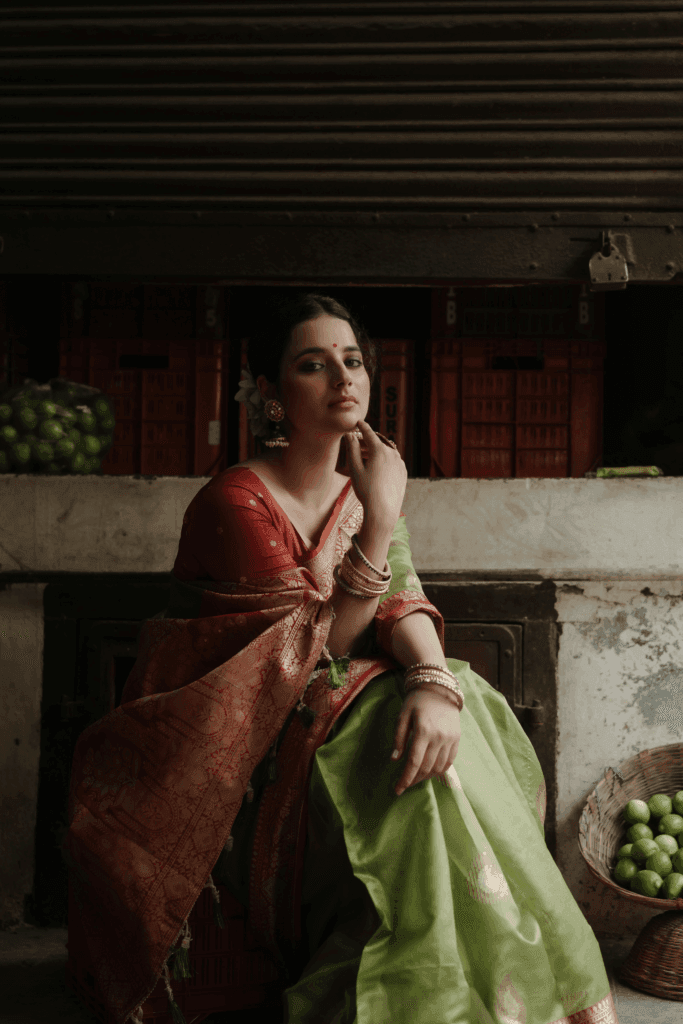

This blog beautifully explores the elegance of Solah Shringar, blending ancient wisdom with modern beauty practices to help women embrace their traditional roots while looking stunning on special occasions.
The solah shringar’s thoughtful design and its connection to the moon’s phases are fascinating. It’s amazing how ancient wisdom can still be relevant today. Embracing these rituals can add a touch of timeless beauty to our lives. Let’s dive into this ancient knowledge!